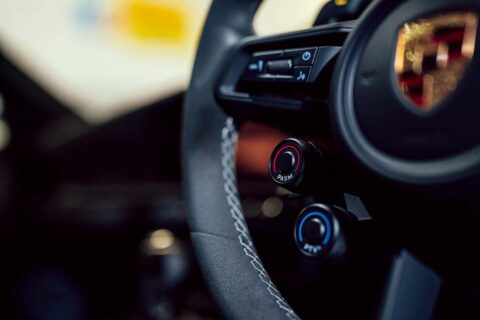The one caveat is that this does assume a level of sensitivity and feel from the driver, plus an ability to focus on several elements.

“You have to be a decent driver to use the system,” says Preuninger. “It makes no sense to fumble around.”
Okay, no fumbling, guessing or larking around. Just concentration. I wonder, are we here to have fun, or just to destroy everything in sight, including the off-duty Ferrari 488 Challenge we’re sharing a garage with?
AJ’s very subtle smirk as he says our overriding aim is simply to get “quicker, and quicker, and quicker” suggests it’s probably both.
In terms of raw pace, there are some basics most of us already know. For example, minimal body roll through a fast corner will help maintain the contact patch between tyre and track, which will give you greater grip, greater apex speed and a quicker lap.
All things being equal, in the GT3 RS you’d achieve this by using the steering wheel to dial both bump and rebound up to ‘+4’ on both axles (the scale ranges from ‘-4’ to + ‘+4’, with zero as the baseline).
Job done. Yet what if, in doing so, you made the car a touch snappy and less confidence-inspiring, because the track is a bit cold and greasy? For the amateur, confidence is crucial. Quicker on paper might be slower in practice.
